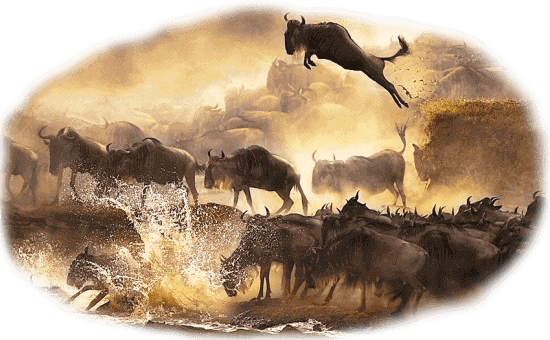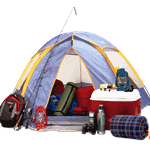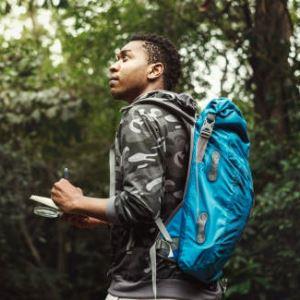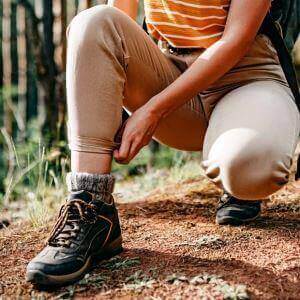 Kenya is one of Africa’s top safari destinations, offering an extraordinary mix of wildlife, landscapes, and cultural heritage. For Polish tourists planning a once-in-a-lifetime adventure, Kenya promises both iconic encounters with nature and immersive local experiences. From the expansive savannahs of Maasai Mara to the flamingo-lined shores of Lake Nakuru, there is no shortage of unforgettable sights. Begin your journey in Maasai Mara National Reserve, home to the legendary Great Migration. From July to October, millions of wildebeests, zebras, and gazelles cross the plains, attracting predators like lions, leopards, and crocodiles. It’s a natural spectacle that defines the essence of a Kenyan safari. For panoramic views of Mount Kilimanjaro, Amboseli National Park is another must-visit. Its large herds of elephants, often seen walking beneath the snow-capped peaks, offer some of the most photogenic safari moments. Beyond wildlife, Kenya also welcomes Polish tourists with enriching cultural experiences. A visit to a traditional Maasai or Samburu village provides deep insight into Kenya’s indigenous communities. These visits allow tourists to witness colorful dances, explore handcrafted jewelry and garments, and learn about age-old traditions that continue to thrive. In Nairobi, Bomas of Kenya offers a cultural showcase, with traditional dances, music, and displays of village life from across the country. Timing your safari well can make all the difference. The dry seasons from June to October and again in January and February are ideal for game viewing, as animals gather near water sources and visibility improves. Polish tourists should pack comfortable, breathable clothing, insect repellent, sun protection, and good walking shoes. It's also wise to carry a travel adapter and ensure required vaccinations like yellow fever are up-to-date. Safety and convenience are crucial for a seamless experience. Booking with a certified local safari company ensures knowledgeable guides, reliable transport, and comfortable accommodations. English is widely spoken in Kenya, making communication easier for Polish travelers, though learning a few Swahili phrases adds a nice local touch. For those seeking the best safari experiences in Kenya for Polish tourists, combining top national parks with cultural interactions and expert travel planning ensures a rich and rewarding adventure. These journeys allow travelers to experience not only the majesty of wildlife but also the vibrant rhythm of Kenyan life. Whether you're exploring the wide-open savannahs, learning about tribal traditions, or sharing stories around a campfire, each moment becomes a treasured memory. Safaris in Kenya are more than just sightseeing tours; they are transformative journeys that touch the heart and soul. For Polish tourists, the appeal lies in the contrast leaving behind the urban landscapes of Europe for the untamed beauty of Africa. From luxury lodges to eco-friendly camps, Kenya offers diverse accommodation options that suit every travel style. Add to that the warmth of Kenyan hospitality, and you have a destination that feels both exotic and welcoming. Kenya is a place where adventure, education, and relaxation blend seamlessly. It's no surprise that many travelers return, drawn again by the magic of the wild. Kenya is a destination that stays with you, long after the safari dust settles.
Kenya is one of Africa’s top safari destinations, offering an extraordinary mix of wildlife, landscapes, and cultural heritage. For Polish tourists planning a once-in-a-lifetime adventure, Kenya promises both iconic encounters with nature and immersive local experiences. From the expansive savannahs of Maasai Mara to the flamingo-lined shores of Lake Nakuru, there is no shortage of unforgettable sights. Begin your journey in Maasai Mara National Reserve, home to the legendary Great Migration. From July to October, millions of wildebeests, zebras, and gazelles cross the plains, attracting predators like lions, leopards, and crocodiles. It’s a natural spectacle that defines the essence of a Kenyan safari. For panoramic views of Mount Kilimanjaro, Amboseli National Park is another must-visit. Its large herds of elephants, often seen walking beneath the snow-capped peaks, offer some of the most photogenic safari moments. Beyond wildlife, Kenya also welcomes Polish tourists with enriching cultural experiences. A visit to a traditional Maasai or Samburu village provides deep insight into Kenya’s indigenous communities. These visits allow tourists to witness colorful dances, explore handcrafted jewelry and garments, and learn about age-old traditions that continue to thrive. In Nairobi, Bomas of Kenya offers a cultural showcase, with traditional dances, music, and displays of village life from across the country. Timing your safari well can make all the difference. The dry seasons from June to October and again in January and February are ideal for game viewing, as animals gather near water sources and visibility improves. Polish tourists should pack comfortable, breathable clothing, insect repellent, sun protection, and good walking shoes. It's also wise to carry a travel adapter and ensure required vaccinations like yellow fever are up-to-date. Safety and convenience are crucial for a seamless experience. Booking with a certified local safari company ensures knowledgeable guides, reliable transport, and comfortable accommodations. English is widely spoken in Kenya, making communication easier for Polish travelers, though learning a few Swahili phrases adds a nice local touch. For those seeking the best safari experiences in Kenya for Polish tourists, combining top national parks with cultural interactions and expert travel planning ensures a rich and rewarding adventure. These journeys allow travelers to experience not only the majesty of wildlife but also the vibrant rhythm of Kenyan life. Whether you're exploring the wide-open savannahs, learning about tribal traditions, or sharing stories around a campfire, each moment becomes a treasured memory. Safaris in Kenya are more than just sightseeing tours; they are transformative journeys that touch the heart and soul. For Polish tourists, the appeal lies in the contrast leaving behind the urban landscapes of Europe for the untamed beauty of Africa. From luxury lodges to eco-friendly camps, Kenya offers diverse accommodation options that suit every travel style. Add to that the warmth of Kenyan hospitality, and you have a destination that feels both exotic and welcoming. Kenya is a place where adventure, education, and relaxation blend seamlessly. It's no surprise that many travelers return, drawn again by the magic of the wild. Kenya is a destination that stays with you, long after the safari dust settles.
Best Places in Kenya for Polish Tourists to Visit on Safari
| Attraction | Highlights | Best Time to Visit | Travel Tip for Polish Tourists |
|---|---|---|---|
| Maasai Mara | Great Migration, Big Five | July - October | Bring binoculars and a camera with zoom lens |
| Amboseli National Park | Elephants, Mt. Kilimanjaro views | June - October | Visit early morning for best light and views |
| Lake Nakuru | Flamingos, rhinos, birdwatching | All year round | Ideal for a day trip from Nairobi |
| Samburu Cultural Visit | Unique tribal customs and dances | All year round | Respect local customs and ask before photos |
| Bomas of Kenya | Cultural shows, homestead displays | Year-round (closed Mondays) | Arrive early to get best seats |
Top National Parks in Kenya for Polish Tourists to Explore Wildlife
Kenya is home to some of the most famous national parks in Africa, making it a dream destination for wildlife lovers. For Polish tourists, these parks offer diverse landscapes and thrilling animal sightings that are hard to match anywhere else in the world. One of the top destinations is the Maasai Mara National Reserve. Known for its wide open plains and massive herds of game, this park is especially popular during the annual Great Migration. From July to October, visitors can witness thousands of wildebeests, zebras, and antelopes crossing the Mara River, often followed by lions and crocodiles. It’s a breathtaking experience that should be on every safari itinerary. Another must-visit is Amboseli National Park, which offers iconic views of Mount Kilimanjaro. Here, elephants roam freely in large herds, often set against the stunning backdrop of the snow-capped mountain. This park is ideal for photographers and those looking to observe animal behavior in a more intimate setting. Lake Nakuru National Park is a paradise for bird watchers. The lake is famous for its large population of flamingos and is also home to endangered rhinos, making it a well-rounded destination for both avian and big game sightings. For those wanting a quieter, less touristy experience, Samburu National Reserve in northern Kenya offers unique wildlife species such as Grevy's zebras, reticulated giraffes, and Somali ostriches. The semi-arid landscape and local Samburu communities also give tourists a different flavor of the Kenyan safari experience. Each park provides a unique slice of Kenya's rich ecosystem and natural beauty. Whether you're seeking dramatic predator-prey encounters, peaceful birdwatching, or awe-inspiring views, Kenya's national parks deliver unforgettable safari moments for Polish tourists. The diversity across the parks means there's something for every kind of traveler. Adventurous spirits may be drawn to the dramatic chases and wild landscapes of the Maasai Mara, while photographers and nature enthusiasts will appreciate the tranquil, elephant-filled scenery of Amboseli. Meanwhile, birdwatchers can lose themselves in the colorful flocks along Lake Nakuru, and cultural explorers will find meaningful interactions in the Samburu region. The accessibility of these parks from major cities like Nairobi also makes planning easier for Polish tourists. Many tour operators offer multi-park itineraries that combine wildlife viewing with cultural immersion, allowing for a rich, well-rounded experience. Whether you're a first-time safari-goer or a seasoned wildlife traveler, the parks of Kenya promise new perspectives and powerful memories. From sunrise game drives to evening campfires under starlit skies, every day in Kenya's wilderness is a chapter in a story you’ll never forget. For Polish tourists looking to combine adventure, culture, and natural beauty, Kenya’s national parks are a perfect fit.
Best Wildlife Safari Parks in Kenya for Polish Tourists to Visit
Embarking on a Kenyan safari is an exciting and enriching experience, especially for Polish tourists seeking both adventure and relaxation. From sprawling savannahs to vibrant wildlife and rich cultural heritage, Kenya offers unforgettable journeys through nature’s wonders. Each national park has its own charm, filled with awe-inspiring encounters with Africa’s most iconic animals. To make the most of your journey, here are the top safari destinations that every Polish tourist should consider when exploring the wild side of Kenya.
- Maasai Mara National Reserve: World-famous for the Great Migration, this park offers one of the most dramatic wildlife spectacles on Earth. Between July and October, you can witness thousands of wildebeests and zebras crossing the Mara River, chased by predators. It’s a photographer’s paradise and a must-see highlight.
- Amboseli National Park: Known for its large herds of elephants and stunning backdrop of Mount Kilimanjaro, Amboseli is perfect for those wanting breathtaking views and intimate animal encounters. Early morning drives offer the best lighting for pictures and the most active wildlife.
- Lake Nakuru National Park: A haven for bird lovers, Lake Nakuru is famed for its flamingos and diverse bird species. The park also hosts rhinos and other big game, making it ideal for visitors who want a balance between birdwatching and traditional safari experiences.
- Samburu National Reserve: For something less crowded and uniquely Kenyan, Samburu offers rare species like the Grevy’s zebra and reticulated giraffe. The semi-arid landscape and cultural interaction with the Samburu people add depth to your adventure.
Kenya safari tour guides for Polish tourists are highly trained and experienced in tailoring trips that combine thrilling wildlife encounters with safe and informative travel experiences. Their local knowledge and hospitality ensure a smooth and memorable journey for every Polish traveler.
Cultural Experiences in Kenya That Polish Tourists Will Enjoy
Kenya offers much more than stunning landscapes and thrilling wildlife encounters. For Polish tourists looking to dive deeper into the country’s heritage, Kenya’s cultural experiences provide an authentic and enriching layer to any safari journey. The chance to connect with Kenya's indigenous communities, explore their traditions, and understand their way of life is an unforgettable aspect of any visit. One of the most immersive cultural experiences is a visit to a Maasai village. The Maasai people are known worldwide for their vibrant red attire, intricate beadwork, and traditional jumping dances. By visiting a local village, Polish tourists can observe daily routines, learn how homes are built from natural materials, and even join in traditional celebrations. These interactions often leave visitors with a deep appreciation of the resilience and pride of Kenya's native tribes. Equally enriching is a trip to the Samburu region in northern Kenya. The Samburu people, who are closely related to the Maasai, live in semi-arid regions and maintain a unique pastoralist lifestyle. Their customs, songs, and dance rituals offer insight into a different facet of Kenya's cultural diversity. Tourists can also witness traditional rites of passage and sample local foods during guided village tours. For a curated cultural experience, Nairobi’s Bomas of Kenya is a must-visit. This cultural center features live performances of traditional music and dance from various Kenyan communities. Visitors can explore replica homesteads from different tribes and get an overview of the nation's ethnic mosaic in one engaging venue. Another powerful way to connect with Kenyan culture is through its vibrant art and craft scenes. Markets in Nairobi and towns near major parks offer a variety of handcrafted items such as jewelry, carvings, and textiles. Purchasing directly from artisans supports local economies and offers tourists meaningful souvenirs to take home. Polish tourists interested in cultural preservation and education may also consider community-based tourism initiatives. These programs, often supported by NGOs or eco-lodges, give visitors a chance to contribute to local development while learning about traditional livelihoods, conservation efforts, and education projects. These experiences are more than just tours they're opportunities for responsible travel and cross-cultural exchange. Incorporating cultural elements into a Kenyan safari not only enhances the travel experience but also creates lasting memories and fosters mutual understanding. These cultural encounters allow Polish tourists to go beyond the typical wildlife experience, offering a deeper appreciation for the people who inhabit Kenya’s diverse landscapes. Participating in tribal ceremonies, visiting rural communities, and exploring local crafts help travelers form meaningful connections and broaden their perspectives. Whether through personal interactions or curated performances, the cultural richness of Kenya will leave a lasting impression on Polish tourists, deepening their connection to the land and its people. These moments like learning a traditional dance, listening to stories from elders, or cooking with local ingredients transform a safari into an immersive, unforgettable journey. For many travelers, these cultural memories become just as powerful as their wildlife encounters, blending heart and soul into the adventure. The human element of the safari, when embraced, becomes the bridge between two worlds and fosters a shared respect that lasts long after the journey ends.
Unique Kenyan Cultural Tours for Polish Tourists on Safari Trips
Kenya’s cultural diversity is a vital part of what makes the country such a compelling safari destination, especially for Polish tourists seeking more than just wildlife sightings. Cultural tours in Kenya offer immersive and meaningful experiences that reveal the heartbeat of the nation its people, their traditions, and their heritage. For travelers wanting to connect more deeply with Kenya, these cultural journeys are both enlightening and enriching. One standout experience is the opportunity to visit authentic Maasai and Samburu villages. These tours are guided by locals who open their communities to visitors, sharing traditional practices and stories passed down through generations. You might join a traditional ceremony, learn how to bead intricate jewelry, or understand the customs that guide daily life. These visits not only foster cultural exchange but also support community development. Another popular cultural attraction is the Bomas of Kenya in Nairobi. This vibrant venue features daily performances showcasing music, dance, and costumes from various Kenyan tribes. The center also includes replicas of traditional homesteads, offering a glimpse into how different communities live across the country. Polish tourists may also enjoy visiting local craft markets, where artisans create handwoven baskets, wood carvings, and beaded artwork. These pieces make for meaningful souvenirs and directly support local families. Additionally, many safari lodges and eco-tourism programs offer community visits where travelers can engage in school visits, farming demonstrations, and conservation projects. These cultural tours not only enrich a Kenyan safari but also provide a broader understanding of the country’s social fabric. Each interaction offers a unique perspective into the daily life, beliefs, and history of Kenya’s indigenous people. From the chants and dances of the Maasai to the pastoral traditions of the Samburu, cultural tours give Polish tourists the chance to experience life through a truly African lens. Participating in these cultural experiences helps break down stereotypes and fosters mutual understanding between hosts and visitors. Many Polish tourists find that such meaningful exchanges leave a deeper impression than even the most thrilling game drives. It’s a chance to witness resilience, hospitality, and identity through living history. Whether it’s sharing stories around a village fire or watching craftspeople at work, the human element of these safaris enhances emotional and educational value. For Polish travelers who enjoy immersive travel, these cultural elements offer an alternative adventure that celebrates Kenya’s heritage. The combination of stunning landscapes, diverse wildlife, and rich traditions makes for a journey unlike any other. The blend of wildlife and culture results in a travel experience that is as soul-stirring as it is unforgettable, one that lingers in memory long after the trip has ended.
Best Times and Travel Tips for Polish Tourists Visiting Kenya
 Kenya’s appeal to Polish tourists extends far beyond its wildlife and scenery the timing and planning of a safari can make or break the overall experience. Knowing when to go, how to prepare, and what to expect ensures a smoother and more enjoyable adventure for every traveler. With its equatorial climate, Kenya offers different highlights throughout the year, making it a destination worth visiting in nearly every season. The best time for a safari is during the dry season, from June to October and again from January to February. These months provide the clearest skies, the lowest chance of rain, and the best wildlife viewing conditions. The world-famous Great Migration in Maasai Mara occurs from July to October and is particularly ideal for Polish tourists planning a once-in-a-lifetime experience. During this time, animals gather near shrinking waterholes, making it easier to spot the Big Five and other wildlife. Preparation is key. Polish tourists should pack lightweight, breathable clothing for daytime and warmer layers for chilly mornings and evenings. Sunblock, sunglasses, a hat, and insect repellent are must-haves. It’s also important to bring a travel adapter and confirm medical requirements in advance vaccinations like yellow fever are often mandatory, and malaria prophylaxis is recommended. Entry requirements include a valid passport and an electronic visa (eVisa), which can be obtained online before travel. It’s advisable to carry printed copies of your travel documents and keep digital backups. To make the most of the experience, consider hiring a certified local safari guide or joining a reputable tour operator. Guides provide valuable insights into animal behavior, local culture, and safety, ensuring a more meaningful safari. Language barriers are minimal, as English and Swahili are widely spoken. However, learning a few Swahili greetings can enhance cultural exchanges and is appreciated by locals. Polish tourists will find Kenyan hospitality warm, welcoming, and deeply rooted in the country’s culture. Beyond game drives, plan time for cultural visits and relaxation. Spend a night at a luxury tented camp, enjoy sundowners overlooking the savannah, or take a guided walk through local villages. These small additions can greatly enrich the safari experience. With proper planning and the right mindset, Polish tourists can enjoy Kenya’s beauty in full. Whether chasing the Great Migration, photographing elephants under Kilimanjaro, or chatting with Maasai elders, the journey will be unforgettable a true blend of adventure and discovery.
Kenya’s appeal to Polish tourists extends far beyond its wildlife and scenery the timing and planning of a safari can make or break the overall experience. Knowing when to go, how to prepare, and what to expect ensures a smoother and more enjoyable adventure for every traveler. With its equatorial climate, Kenya offers different highlights throughout the year, making it a destination worth visiting in nearly every season. The best time for a safari is during the dry season, from June to October and again from January to February. These months provide the clearest skies, the lowest chance of rain, and the best wildlife viewing conditions. The world-famous Great Migration in Maasai Mara occurs from July to October and is particularly ideal for Polish tourists planning a once-in-a-lifetime experience. During this time, animals gather near shrinking waterholes, making it easier to spot the Big Five and other wildlife. Preparation is key. Polish tourists should pack lightweight, breathable clothing for daytime and warmer layers for chilly mornings and evenings. Sunblock, sunglasses, a hat, and insect repellent are must-haves. It’s also important to bring a travel adapter and confirm medical requirements in advance vaccinations like yellow fever are often mandatory, and malaria prophylaxis is recommended. Entry requirements include a valid passport and an electronic visa (eVisa), which can be obtained online before travel. It’s advisable to carry printed copies of your travel documents and keep digital backups. To make the most of the experience, consider hiring a certified local safari guide or joining a reputable tour operator. Guides provide valuable insights into animal behavior, local culture, and safety, ensuring a more meaningful safari. Language barriers are minimal, as English and Swahili are widely spoken. However, learning a few Swahili greetings can enhance cultural exchanges and is appreciated by locals. Polish tourists will find Kenyan hospitality warm, welcoming, and deeply rooted in the country’s culture. Beyond game drives, plan time for cultural visits and relaxation. Spend a night at a luxury tented camp, enjoy sundowners overlooking the savannah, or take a guided walk through local villages. These small additions can greatly enrich the safari experience. With proper planning and the right mindset, Polish tourists can enjoy Kenya’s beauty in full. Whether chasing the Great Migration, photographing elephants under Kilimanjaro, or chatting with Maasai elders, the journey will be unforgettable a true blend of adventure and discovery.
When to Visit Kenya and Travel Advice for Polish Safari Tourists
Choosing the best time to visit Kenya is essential for Polish tourists planning a safari adventure. Kenya’s climate is generally pleasant throughout the year, but the timing of your trip can greatly influence your experience, especially when it comes to wildlife viewing and cultural activities. Understanding the seasons, packing smart, and following expert travel advice can ensure a safe, comfortable, and unforgettable journey. Kenya has two dry seasons that are considered the best times for a safari. The first occurs from June to October, with July to September being particularly good for seeing the Great Migration in Maasai Mara. During this time, animals gather around water sources, making it easier to spot the Big Five. The second dry season, from January to February, also offers excellent game viewing, especially in parks like Amboseli and Tsavo. Polish tourists should prepare for warm daytime temperatures and cooler mornings and evenings. Bring layered clothing, sunscreen, sunglasses, a wide-brimmed hat, and insect repellent. Sturdy walking shoes are important for bush walks and excursions. It's also advisable to bring a power adapter and a camera with a zoom lens to capture those once-in-a-lifetime safari moments. Health and safety are key. Before departure, travelers should consult with a medical professional about required vaccinations, such as yellow fever, and consider malaria prophylaxis. Travel insurance that covers medical emergencies is highly recommended. Kenya requires a valid passport and an electronic visa (eVisa), which Polish tourists should apply for online before departure. To ensure a high-quality experience, it's best to book through reputable tour operators. Certified safari guides provide not only safety and logistics but also valuable insights into animal behavior, ecosystems, and local culture. English is widely spoken in Kenya, which makes communication relatively easy for Polish visitors. Learning a few Swahili greetings, however, is a thoughtful gesture that locals appreciate. Beyond wildlife, consider incorporating cultural experiences like visits to Maasai villages, artisan markets, or traditional performances. These moments add depth to the safari and provide a well-rounded perspective on Kenyan life. Rest days are also valuable a night in a luxury tented camp or a sundowner in the bush can be just as memorable as a game drive. For Polish tourists, proper timing and preparation transform a safari into more than just a vacation. It becomes a personal journey through one of Africa’s most inspiring landscapes, filled with extraordinary encounters and unforgettable memories.
FAQs About the Best Kenyan Safari Destinations for Polish Visitors
Planning a safari in Kenya can be thrilling, but preparation is key to a smooth and memorable experience. Polish tourists will find that asking the right questions leads to better travel decisions, especially when navigating cultural norms, weather conditions, and health requirements. From timing your visit to knowing what to bring, this guide answers common voice search questions, making your safari both safe and unforgettable.
- What Is the Best Month for a Safari in Kenya? The ideal time to visit Kenya is during the dry season, especially from July to October. This period offers great weather and prime wildlife viewing, including the Great Migration in Maasai Mara.
- Do Polish Tourists Need a Visa to Visit Kenya? Yes, Polish travelers need an electronic visa (eVisa) to enter Kenya. It can be easily applied for online and should be arranged before departure to avoid delays at the airport.
- Is Kenya Safe for Polish Tourists on Safari? Kenya is generally safe for tourists. It’s important to travel with a certified tour operator and follow local safety advice. Avoid isolated areas at night and stay updated on current travel advisories.
- What Vaccinations Do Polish Tourists Need for Kenya? Yellow fever vaccination is often mandatory. Other recommended vaccines include hepatitis A, typhoid, and rabies. Consult a travel clinic at least six weeks before your trip.
- What to Pack for a Safari in Kenya for Polish Tourists? Pack breathable clothes for daytime, warm layers for morning drives, a hat, sunscreen, insect repellent, and comfortable shoes. Don’t forget a camera, binoculars, and a universal power adapter.
- Can Polish Tourists Drink Tap Water in Kenya? It’s not recommended. Stick to bottled or filtered water for drinking and brushing teeth. Most lodges and safari camps provide safe water options for guests.
- What Language Is Spoken in Kenya and Will Polish Tourists Understand? Kenya’s official languages are English and Swahili. Most tour guides speak English fluently, so communication is rarely a problem for Polish visitors.
- Are There Vegetarian or Special Diet Options in Kenya? Yes, many lodges and hotels cater to vegetarian and special diets. Inform your tour operator in advance so they can accommodate your dietary needs during the safari.






